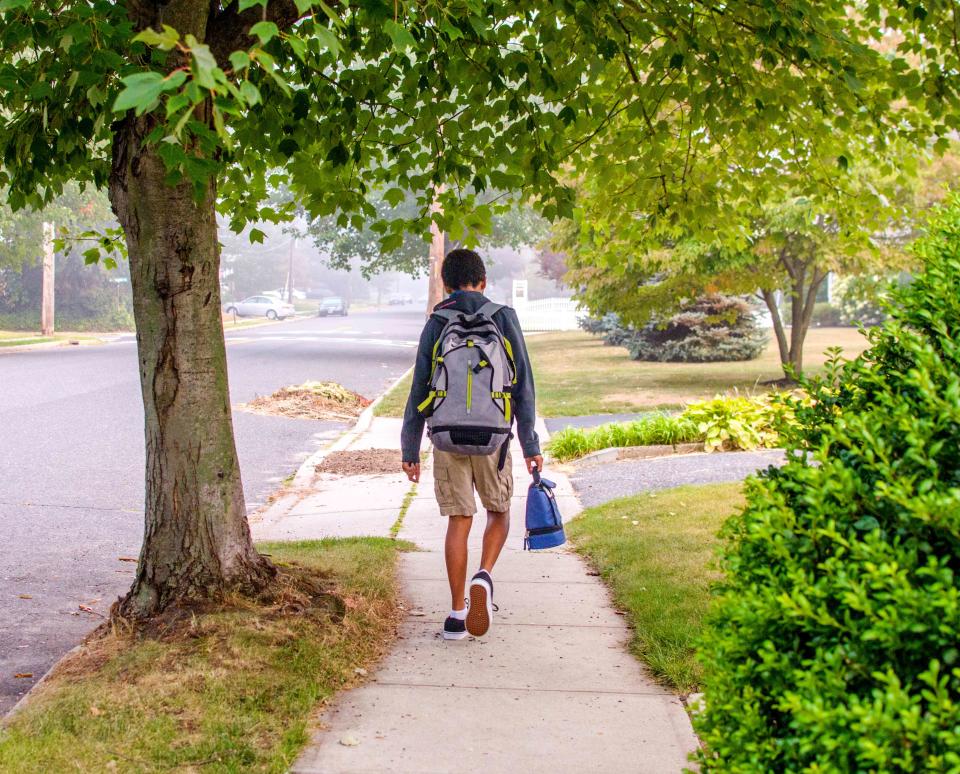From Ralph Yarl to Emmett Till, Neighbors Present An Enormous Threat to Black Boys
- Oops!Something went wrong.Please try again later.
Generations of violence against Black teen boys proves that, for them, 'Neighborhood Watch' may be the most dangerous thing about being home.

Getty Images/Sue Barr
Fact checked by Karen Cilli
Ralph Yarl was on his way to get his brothers. The 16-year-old headed to pick up the twin boys from their friend’s home, accidentally mixed up the address, ending up at a house on Northeast 115th Street instead of Northeast 115th Terrace—an honest mistake anyone could have made. This one nearly cost him his life.
Ralph rang the doorbell, prepared to greet his brother and make their way home. He instead was met by 84-year-old Andrew Lester, who shot Ralph in the head through the glass door. Lester then shot Ralph again in the arm after Ralph fell. Despite his injuries, Ralph somehow made it to not one, not two but three neighbors' homes, one of which told Ralph to get down on the ground with his hands up. A different neighbor finally came valiantly to Ralph’s aid.
Ralph would end up spending days in a hospital recovering from his wounds—for knocking on the wrong door.
Andrew Lester, who shot Ralph, later told investigators he was “scared to death” by Ralph’s size and his own potential inability to defend himself. As much as people would like to believe Ralph Yarl’s story is an outlier, unfortunately, this isn’t the first time something like this has happened to a Black child.
In April of 2018, then-14-year-old Brennan Walker did what many kids have accidentally done— missed his school bus. He stopped by a home that looked safe, one bearing a sign that said “Neighborhood Watch,” to ask for directions. The home belonged to Jeffery Zeigler. Instead of giving the teen directions to his school, Zeigler ended up shooting at Brennan, who ran for his life. Zeigler's wife screamed at the teen and called the police, saying that a Black male was trying to break into her house and her husband chased after him into the yard.
Luckily Brennan escaped, physically unharmed.
Not all kids are so lucky. In June of 2021, Coby Daniel, then 6 years old, left his bike in front of his neighbor’s home while playing outside with his friends. The neighbor, Ryan Le-Nguyen, threatened the child with a sledgehammer, then went back into his own house and fired at Coby, hitting him in his arm.
In May of 2012, 13-year-old Darius Simmons watched his mother, Patricia Larry, be confronted by their neighbor, John Henry Spooner, who accused Darius and his older brother of stealing his shotguns. When she attempted to verbally defend her sons, Spooner drew his 9mm at her. Darius, who was at school at the time Spooner’s guns were stolen, denied he stole the weapons. Spooner shot Darius at close range in the chest. He later died.
Note the similarities: Zeiglar’s wife assumed that a Black boy who was knocking on her door was attempting to break into their home, Spooner assumed the Black kids in his neighborhood had robbed him, and Lester said he was “scared to death” by Yarl’s size. These are not random wacky misconceptions but are, too often, the biased views neighbors hold about Black children—that they are delinquent, deceptive, and dangerous.
Black children are “adultified” or viewed and treated as adults and even punished like them. Adultification is a legacy of enslavement and results in Black children receiving harsher punishments in school; they are 18 times more likely to be criminally sentenced as adults than white children their same age.
One study found that Black teen boys, in particular, are viewed as “less innocent” and therefore less in need of protection or care, while a separate study found that perceptions around Black teen boys, in particular, viewed them as “adultlike,” bigger, and more formidable.
This misconception of formidability and the absence of innocence leads to fear and suspicion. But fear or suspicion too often leads to Black kids’ harm or worse, their deaths.
Thirteen-year-old Sinzae Reed was sitting outside of an apartment building. Fifteen-year-old Jordan Edwards was riding in a car leaving a party. Twelve-year-old Tamir Rice was playing in the park with a toy gun. Seventeen-year-old Trayvon Martin was walking home after school in the rain. Fourteen-year-old Emmett Till was spending the summer with his cousins, and with the death of Carolyn Bryant, no one has been held accountable for his gruesome murder to date.
These were all Black boys who were perceived as community threats. They should've been able to play outside or ask for directions or show up at the wrong door without fear of losing their lives.
These Black boys deserved to be seen and treated as children.
For more Parents news, make sure to sign up for our newsletter!
Read the original article on Parents.

